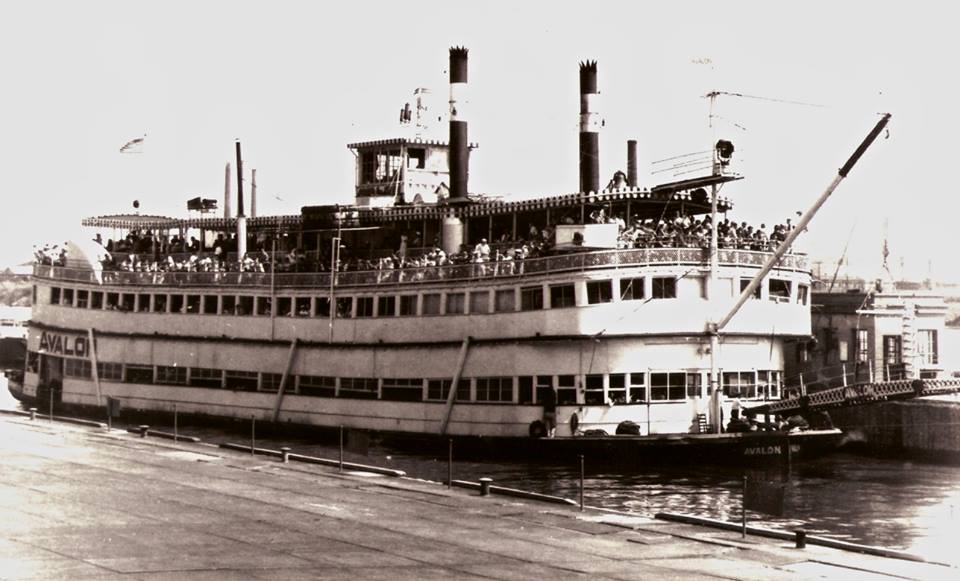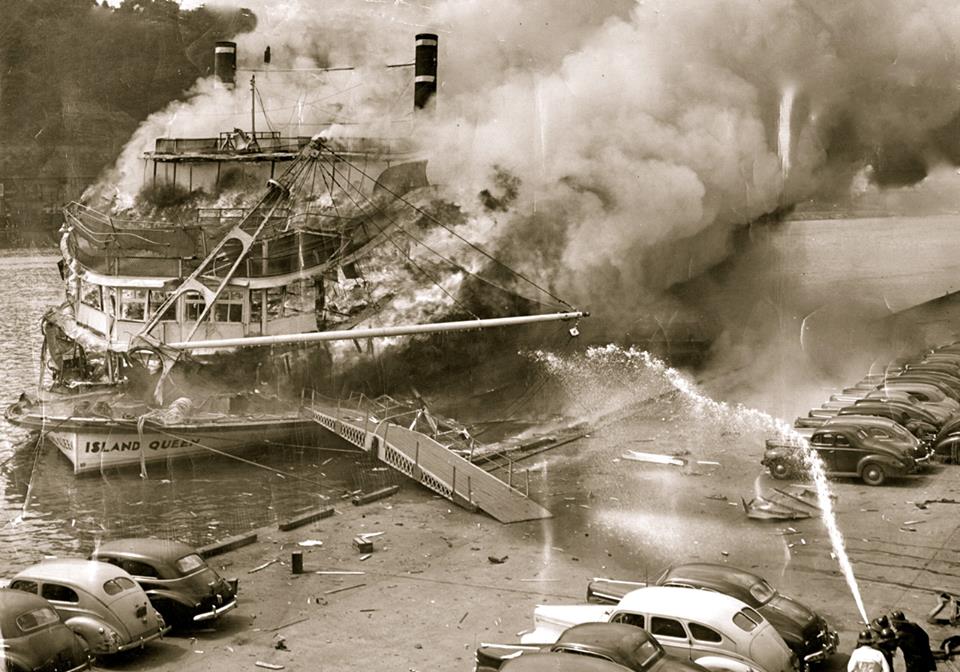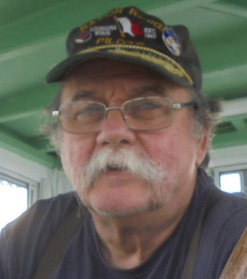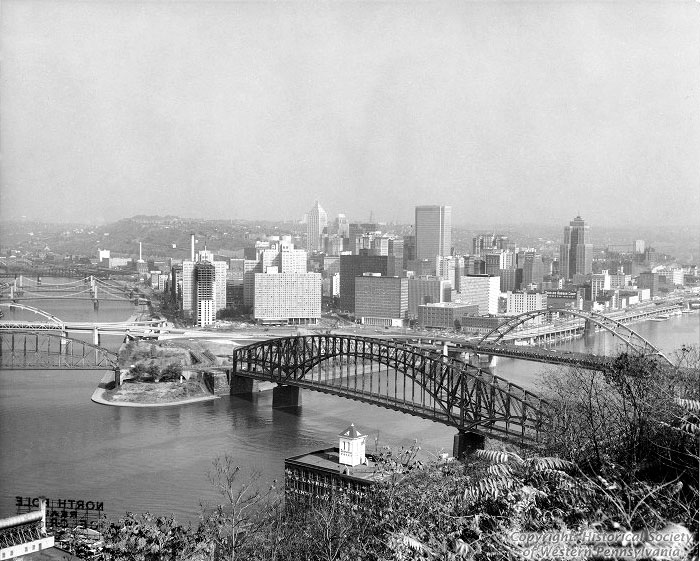The riverboat captain is a storyteller, and Captain Don Sanders will be sharing the stories of his long association with the river — from discovery to a way of love and life. The is a part of a long and continuing story.
By Capt. Don Sanders
Special to NKyTribune
About ten miles upstream from Sistersville, the chamber at Lock and Dam 15 was waiting as the AVALON rounded the sharp bend above the hamlet of Sardis, Ohio on the right descending bank of the river. L&D 15 was one of fifty wicket-style moveable dams constructed on the Ohio River between 1879 and 1929 making the Ohio navigable its entire length at all times.

About ten miles upstream from Sistersville, the chamber at Lock and Dam 15 was waiting as the AVALON rounded the sharp bend above the hamlet of Sardis, Ohio on the right descending bank of the river.
The wooden wickets, looking like substantial barn doors some four-feet wide by twenty feet long, and hinged to a cement sill on the bottom of the river, could be raised and set into place creating a pool of water behind the dam deep-enough to allow boats and barges to navigable when the river would, otherwise, be too low. But when the river rose sufficiently to a depth the dam was not necessary for the passage of vessels, the wickets were lowered to the riverbed and raised, again, when needed to maintain the pool.
My job as the AVALON entered Lock 15, was, as usual, standing by myself on the fantail manning the stern line. What I enjoyed most about coming into a lock from the downstream end of the chamber, when the concrete wall was wet and slick with green moss, were the earthy smells of river water and damp vegetation. But soon, all the lines sent up to the lock attendants using the handy-lines they tossed down to us, were made secure to the heavy kevels that held them fast to the steamboat deck.
As the water level within the chamber rose to the height of the pool above the dam, the resulting slack in my line had to be taken in to maintain enough strain to keep the steamboat from surging in the turbulent water as the lock filled. Once the water was level with the pool behind the dam, the upper lock gates slowly opened. When they both were securely open, the lockman signaled the pilot with a short toot, who, in return, tooted our whistle in reply. At that last signal, with a quick twist of my wrist, I rolled the eye of the line off the lockwall bollard without assistance as the engineroom bells jingled and the first blast of live steam hissed into the port high-pressure engine behind me, and the bright red paddlewheel rolled ahead. With each revolution, the AVALON gained momentum and quickly departed Lock and Dam 15.

It was early in the morning when the AVALON tied-up below the historical 1849 Wheeling, West Virginia Suspension Bridge after easing by New Martinsville, Clarington, and Moundsville.
As the stern passed along the lockwall where our bow had been, I spied the cardboard box left on the wall for the lockmen filled with “goodies” from the galley and the gift shop, as was our custom for the services they provided. Walter Hoffmeier, I remembered, did the same for the lockmen at L&D 36 the first time I transited a lock aboard his PAL-O-MINE a few years before I joined the crew of the AVALON. A few snacks and souvenirs, with several cans of cold beer hidden on the bottom of the box, would be pleasantly remembered the next time the steamboat blew for a lockage.
It was early in the morning when the AVALON tied-up below the historical, 1849 Wheeling, West Virginia Suspension Bridge after easing by New Martinsville, Clarington, and Moundsville. Captain Wagner had us ashore cleaning up the riverbank around where the steamboat was tied off. Neatly dressed young women hurried by without looking our way as they scurried to offices and businesses further uptown. Amused at the hustle- bustle beehive of activity of the day workers as they zipped by, I commented to myself, “I’m sure glad I don’t have to go to work.!” Bobbie, switching grass close-enough to overhear me, replied,
“Where tha hell ya think yer at now?”
Some years later, my Bluegrass Musician friend and fellow steamboatman, John Hartford, would write the lyrics to a tune that perfectly described that long-ago morning in Wheeling:
“And it’s goodbye to the sunshine. Goodbye to the dew. Goodbye to the flowers, and goodbye to you. I’m off… and must not be late. Going to work in tall buildings.”

Sewickley, PA was the home of Captain Fred Way seen standing on the riverbank, waving the familiar two-armed “river wave,” as we passed.
John Hartford, I’m confident, would have approved my use of his words. Thanks, old friend.
The further up the Ohio River the AVALON went, the more excited the crew became to see Pittsburgh. But East Liverpool, the last town in Ohio before the AVALON crossed into Pennsylvania, had two bookings; so a stop was predestined long before our arrival on the upper river.
Sewickley, PA was the home of Captain Fred Way seen standing on the riverbank, waving the familiar two-armed “river wave,” as we passed. Captain Edgington, the pilot on watch, nearly drained the boilers of steam as he saluted his old friend, ashore. Later, someone mentioned that Cap’n Way would surely visit the boat once we landed and settled down beyond “The Point” where the Allegheny and Monongahela Rivers commingle their waters to become the source of the nearly thousand-mile-long Ohio River.
The last lock before Pittsburgh was Emsworth Lock & Dam at Neville Island where the Dravo Shipyard was busily building barges and a towboat, or two, as the AVALON steamed by. Thirteen years earlier, in 1947, the DELTA QUEEN was “on the ways” at the yard for her conversion into an overnight passenger packet after completing a long and arduous journey from San Francisco by way of the Panama Canal. Ironically, on the 9th of September, 1947, while the DELTA QUEEN was out of the water at the shipyard we were passing off our starboard side, Captain Wagner was in his bunk on the sidewheel steam excursion boat, the ISLAND QUEEN, the second.

The ISLAND QUEEN, moored with only crew members aboard between excursions at the Foot of Wood Street above the Mouth of the Monongahela River, the very dock where we were heading, exploded and burned when a welder’s torch cut through the Main Deck and into a fuel tank full of hot Bunker C oil.
The ISLAND QUEEN, moored with only crew members aboard between excursions at the Foot of Wood Street above the Mouth of the Monongahela River, the very dock where we were heading, exploded and burned when a welder’s torch cut through the Main Deck and into a fuel tank full of hot Bunker C oil. Cap, though seriously burned, managed to escape the inferno by jumping into the water carrying a “band boy,” as Captain Wagner called the musician belonging to the Clyde Trask Orchestra, the Coney Island steamboat’s house band, he tripped over fleeing the smoke and flames. Wagner, the ISLAND QUEEN’s First Mate, pulled the lucky man, who had given up all hope of surviving, with him as he leaped over the railing of the burning boat and into the soothing waters of the Monongahela where rescuers quickly pulled both men from the river.
Admittedly, I thought as I stood on the bow staring intently at the skyline of Pittsburgh ahead, Cap must have his mind busy remembering that fateful day the closer the AVALON approached where Wood Street met the Monongahela.
Approaching the Steel City, traveling up the Ohio River, is unlike meeting a city anywhere else on any river. All the other towns and cities are met parallel to the river with the burg lying either to the port or starboard side of the boat. Pittsburgh, however, sits in a triangle of land with three rivers guarding its point and flanks. The Allegheny, a relatively young river formed at the end of the last Ice Age, lies to the north, or left, of the apex and the slower and much older Monongahela to the right. Together they merge and form the Ohio River at what is called “The Point,” the site of the old French Fort Duquesne, renamed Fort Pitt after the Brits gained possession during the French and Indian War – or at least that was Harry Ricco, the Watchman was telling all of us crowded on the bow.
Ricco, the captain of the AVALON’s rescue boat, for which I was his oarsman, hailed from Pittsburgh, and he was proudly determined to show off his knowledge of his hometown. Yinzers, Pittsburghers, are mostly like that, I soon found — extremely overjoyed that “The Burg” was a unique place they boastfully called home. Ricco was no exception, but I, admittedly, enjoyed learning new things about the last city the AVALON would be visiting that season, as October was already the month showing on the calendar tacked to the cookhouse wall.
As we watched the tall buildings of downtown Pittsburgh approach our bow head-on, the river soon forked.

Approaching the Steel City, traveling up the Ohio River, is unlike meeting a city anywhere else on any river. All the other towns and cities are met parallel to the river with the burg lying either to the port or starboard side of the boat. Pittsburgh, however, sits in a triangle of land with three rivers guarding its point and flanks.
When I thought the pilot had to make a change in course soon, or else the AVALON would be slamming into the Point, the nose of the boat swung to starboard aiming toward the hulking, abandoned, mammoth Point Bridge spanning the mouth of the Monongahela River. To my left, I looked at the array of ancient factory buildings not far above the mouth of the Allegheny River. A familiar-looking sign proclaimed CLARK where my mother’s favorite candy, Clark Bars, were manufactured. Captain Hawley, standing by to supervise the crew for the landing within sight, informed us that the D. L. Clark Company occupied the site of the James Reese & Sons Company, the builders of the IDLEWILD, the name the AVALON bore when it came off the ways in 1914.
Our steam engines were Rees originals that powered another steamboat before they were placed aboard in the engineroom where they were working full ahead, forty-years later, to shove the AVALON to the foot of Wood Street. As we passed beneath the silent Point Bridge, Captain Hawley ordered the crew to untie the stage and prepare the deck for the landing. High above, in the wheelhouse, the Pilot stepped on the whistle treadle as steam hissed out of the boilers, up the steam line to the roof, and across the cups of the legendary whistle as he blew for a landing.
No sooner had the final reverberations of the echoes of the whistle bounced off the last tall building ashore, the lines were tied-off, doubled-up, and the stage set into place. Captain Wagner called, “ALL FAST” to the tune of the bells of the Engine Order Telegraph telling the engineers to put their charges to rest, and the AVALON settled into its temporary residency at the Wood Street steamboat landing. As quickly as the crew was permitted to go ashore, many from all departments filed across the stage to explore the haunts of downtown Pittsburgh. But I stayed aboard and lowered the skiff into the river and explored within easy-distance, what I could discover under oars. Pittsburgh, I was confident, was going to be an exciting final stop for the 1960 excursion-boat season.
(To be continued…)

Captain Don Sanders is a river man. He has been a riverboat captain with the Delta Queen Steamboat Company and with Rising Star Casino. He learned to fly an airplane before he learned to drive a “machine” and became a captain in the USAF. He is an adventurer, a historian and a storyteller. Now, he is a columnist for the NKyTribune and will share his stories of growing up in Covington and his stories of the river. Hang on for the ride — the river never looked so good.

A familiar-looking sign proclaimed CLARK where my mother’s favorite candy, Clark Bars, were manufactured. Captain Hawley, standing by to supervise the crew for the landing within sight, informed us that the D. L. Clark Company occupied the site of the James Reese & Sons Company, the builders of the IDLEWILD, the name the AVALON bore when it came off the ways in 1914.

As we passed beneath the silent Point Bridge, Captain Hawley ordered the crew to untie the stage and prepare the deck for the landing. High above, in the wheelhouse, the Pilot stepped on the whistle treadle as steam hissed out of the boilers, up the steam line to the roof, and across the cups of the legendary whistle as he blew for a landing.
























